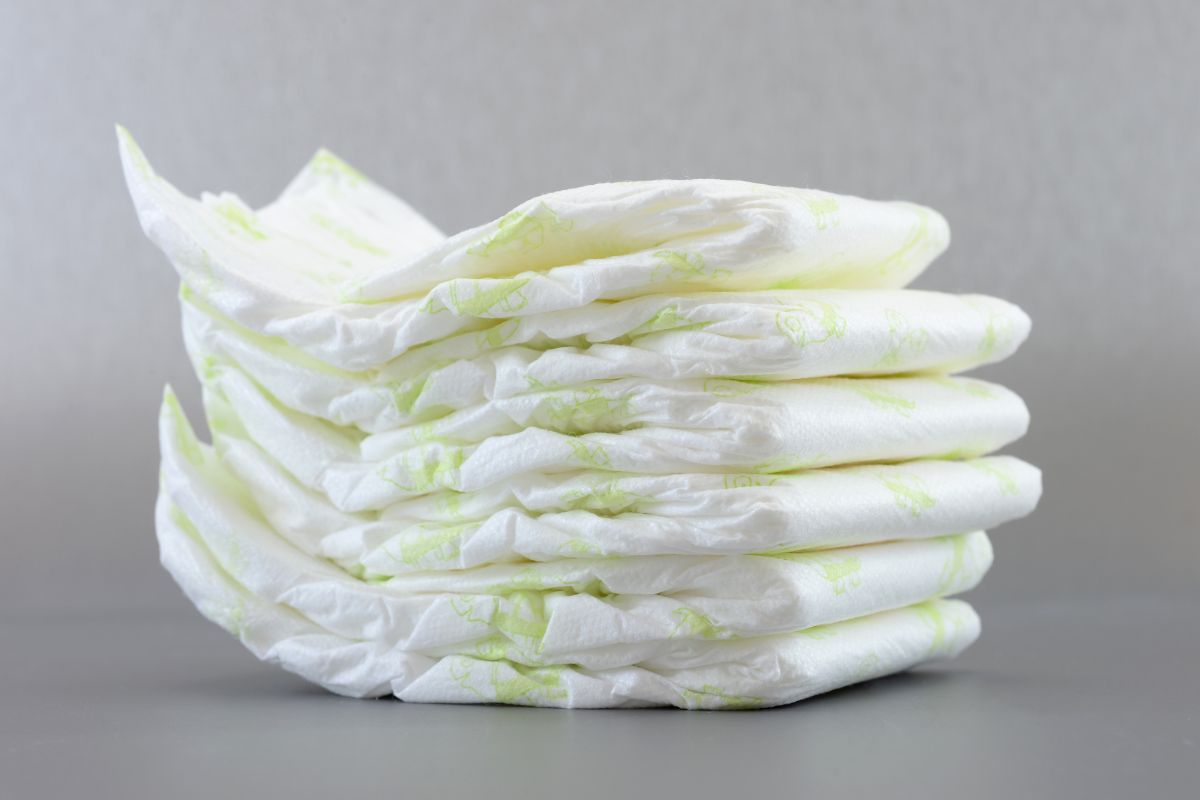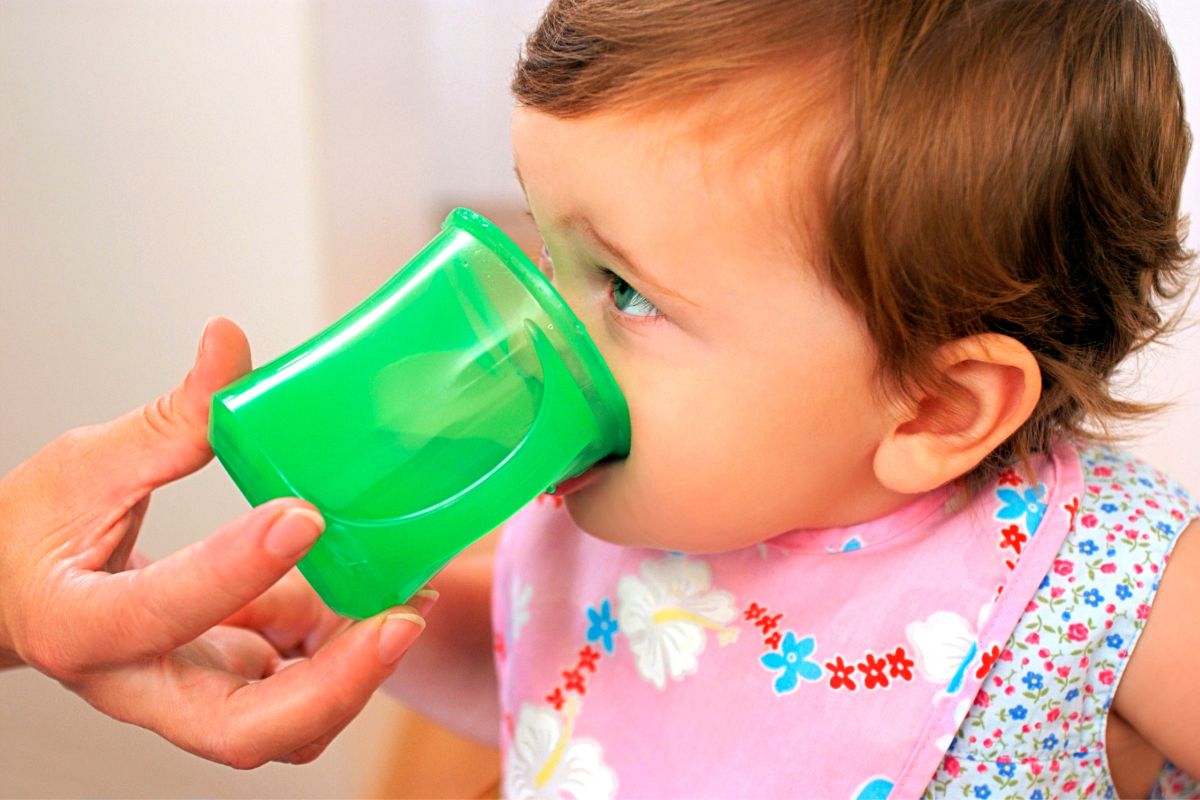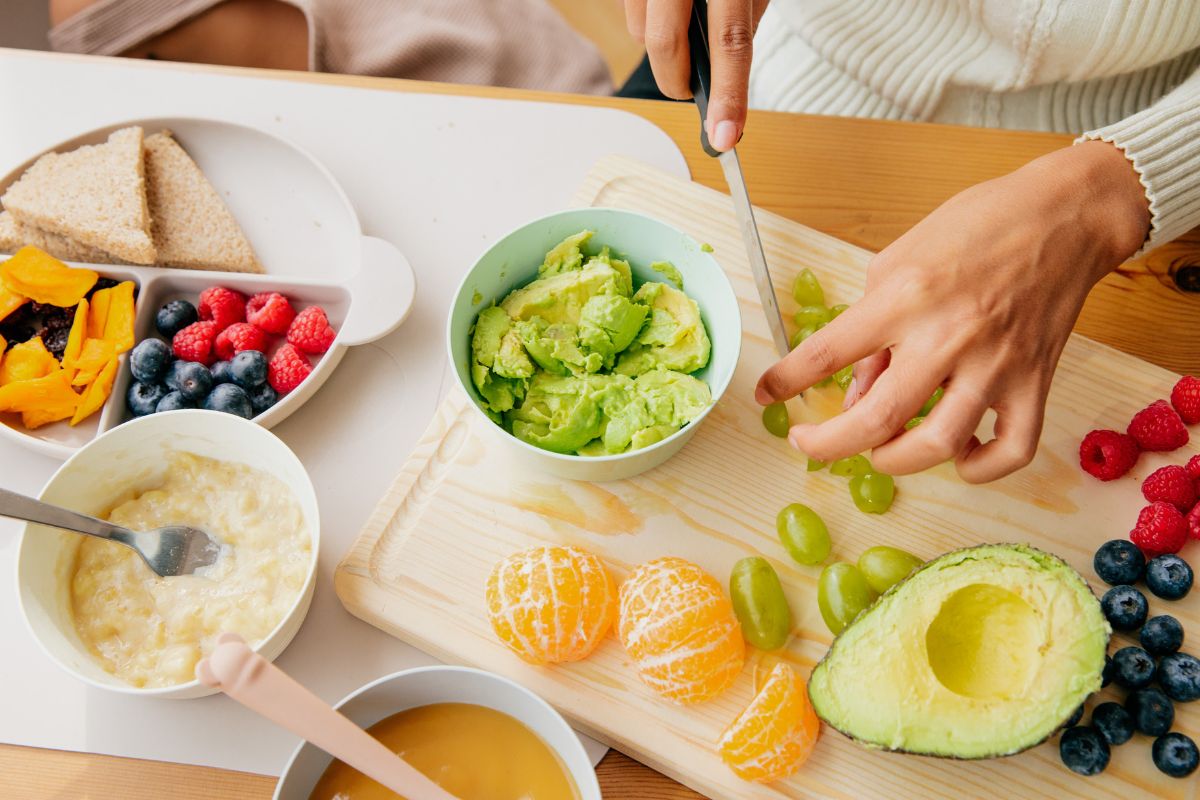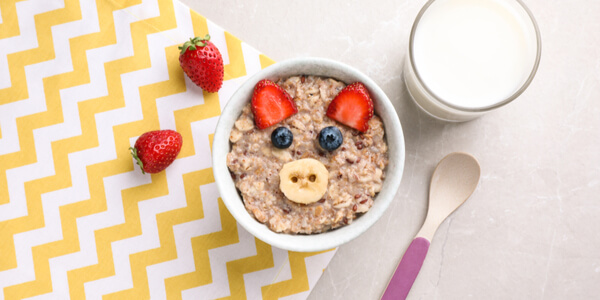INSIDE: Is your baby struggling to poo? Or have you heard that constipation can be a problem during weaning? Don’t worry, by the time you’ve finished reading this blog; you’ll have the FULL lowdown on what to expect in your baby’s nappy when they start solids (and how to keep things moving!).
ONE minute, you think you can’t cope with another ‘Poo-nami’ of liquid poo.
Next, you wish for one, when your baby is red, squirming and trying to pass what looks like an adult poo!
Don’t be surprised by your baby’s poo when they start solids!
Be prepared for some changes to your baby’s poo when they start weaning as your baby’s system gets used to processing new foods.
Remember, solid food causes solid poo! If you’re used to the ‘liquid gold’ typical of the breastfed baby, this will be a bigger shock!
There’s no normal for your baby’s nappies- no magic number or schedule.
Like their parents, your baby’s bowel movement patterns vary, and poo can change in texture daily. However, constipation is common in babies and often due to the types of foods offered (or not offered).

There’s no magic number when it comes to ‘dirty nappies’!
6 Foods (and Drinks) to Offer Your Baby During Weaning to Prevent and Help with Constipation
Together will fluid, fibre-rich foods help your baby’s poo move more easily and quickly through their bowel. Here are some EASY WAYS to increase fibre in a baby-friendly way.
1. Keep your baby well hydrated
Your baby may refuse milk when she’s unwell or teething. Or may not be drinking enough water with solid foods.
Whatever the reason, if your baby isn’t getting enough fluids, she may become dehydrated. This can cause dry, hard poo that is difficult to pass.
Make sure to continue breastfeeding on demand, makeup formula milk correctly, and offer cooled, boiled water from an open cup with meals.

Offer sips of cooled, boiled water with all meals
2. Offer a Variety of Fruits Every Day
All fruits are excellent fibre providers, and the best approach is to offer your baby a variety every day.
Processing fruits such as fruit puree pouches changes the nutrients in foods, making them lower in fibre and higher in free sugars.
A wiser option is to offer your baby suitable ‘real’ fruit like ripe peeled fingers of pear or kiwi or mashed cooked or ripe fruits like raspberries and blackberries.
You can also add dried fruits to foods like porridge, pancakes and muffins- and don’t just think raisins, there’s a whole world of dried fruits to try, like apricots, figs, prunes, cranberries and even dried blueberries.
3. Don’t Forget about Veggies!
Veggies also burst with fibre but are often overlooked in favour of fruits. Again, don’t just rely on a few staples.
Weaning is a golden opportunity to expose your baby to all the wonderful flavours and textures of vegetables. We know that adequate vegetable intake will affect your baby’s gut health now and in the future.
Following a vegetable-led approach to weaning and offering various daily vegetables might help.

Offer a variety of fruits and vegetables rather than trying to overdose on prunes!
4. Introduce whole grains slowly
While adults should eat mostly wholegrains for good gut health, it’s important to remember that babies are not mini-adults. Wholegrains can be too filling for babies who need lots of energy but have small tummies.
So introduce these gradually to your baby. You can do this by offering various kinds of cereal like porridge, Ready Brek, Weetabix, Shredded Wheat or any of these breakfast options.
And when it comes to bread, pasta and rice, alternate between white and wholegrain varieties. Here’s some advice on when and how to introduce these gluten-containing foods.
Never add bran to your child’s diet.
RELATED: Easy ways to serve Weetabix for babies-and why to do it!
5. Make Use of Pulses
Pulses like beans, lentils and peas are a source of iron and are high in fibre. Use these as an alternative some days to meat, chicken or fish at lunch or dinner.
Try baked beans on wholegrain toast, hummus on an oatcake, and lentil soup with toast soldiers.
Or add alongside meat in dishes like stews, bolognese and curries. You can either use tinned beans or lentils or the dried varieties. You can add a few fistfuls of dried red lentils to curry or bolognese, and they will cook in the sauce.
6. Introduce Your Baby to Seeds and Nuts (Safely!)
Although your baby can’t eat whole or chopped nuts or seeds, they can eat these in ground form or as smooth nut butter.
Use smooth nut butter in porridge, Weetabix, yoghurt, on toast/crackers or add to dishes like curries and soups. You can use ground nuts or milled or crushed seeds (like ground almonds, chia or flaxseed) in yoghurt, cereal, pancakes, and muffins.
*Keep flaxseed to ½ tsp per day. Babies over 12 months can have whole flaxseed or seed mixes containing honey.
LEARN MORE: Step-by-step guide on how to introduce potentially allergenic foods like peanuts

It’s easy to add ground nuts or seeds to your baby’s cereal
Ready, Steady, Wean-From Confused To Confident In No Time At All
Save yourself time, stress and money and get all the answers you need in one easy-to-follow online course.

5 More Things that Can Help if Your Baby is Struggling with Constipation During Weaning

Baby massage can help-and it’s a nice way to bond
NO. 1: Sorbitol-Containing Foods
As well as being a good source of fibre, specific fruits and juices made from pears, prunes and apples contain carbohydrates (Sorbitol) that increase stool movement and frequency.
You can use pear, prune, apple purée or juices from these.
We don’t generally recommend fruit juice for young children, but in this case, it can help. You can offer this twice daily when your baby struggles with constipation.
For babies 3-12 months, dilute 2-3 teaspoons in 50mls water. For toddlers, mix one to two parts water with one part juice.
NO. 2: Encourage Exercise
Movement speeds up digestion, which can help move things through the body more quickly. If your child isn’t walking yet, leg bicycles may be helpful.
NO. 3: Try Specific Baby Massage Techniques
Gentle stomach and lower-abdomen massages may stimulate the bowels to pass a bowel movement. Do several massages throughout the day until your child has a bowel movement.
NO. 4: Offer Your Baby a Warm Bath
A relaxing warm bath may help their stool pass more easily. During or after the bath, try gently massaging the tummy.
Can you call yourself a parent unless you’ve fished out poo from the bath?
NO. 5: Talk to Your GP
If you’re doing all the steps above and your baby still struggles with hard, infrequent poos, speak to your GP. Some babies may need laxatives to help them.
If your baby has been prescribed a laxative and you have questions and concerns about this, then the ERIC Charity has some great information to reassure and inform you.

You might hear some old wives’ tales about constipation!
5 common myths you might hear about constipation in babies
Myth 1: Bananas cause constipation
There’s no strong evidence suggesting that bananas cause or contribute to constipation.
However, if bananas constipate your baby, take them out and gradually add them back later.
Myth 2: Cows’ milk causes constipation.
Constipation can be a symptom of a delayed Cows Milk Protein Allergy (CMPA). However, it tends to strain to pass a soft poo rather than the typical constipation poos. And it’s unlikely to be the only symptom of CMPA.
If you’re worried about a possible delayed CMPA, please see a registered dietitian for a proper diagnosis.
On the other hand, some formula-fed babies will appear to get constipated when they switch from formula to whole cow’s milk at age one. This is unlikely an allergy but a symptom of your baby getting used to this change.
Babies, especially older babies who drink large amounts of milk, can become constipated as the milk leaves no room for the above foods!
Are you switching from formula to cow’s milk? You’ll find all you need to know here.
Myth 3: Brown sugar in water is a good ‘cure’ for constipation.
This combination works like the fruit juices above by drawing water into your baby’s bowel. However, it’s no longer recommended for the treatment of constipation.
Myth 4: You should always offer a probiotic if your baby is constipated
Although this is an exciting research area, we don’t yet have enough evidence to say which strain of bacteria or what dose and duration is beneficial for preventing or treating constipation.
The best advice to encourage healthy gut bacteria is to breastfeed and offer a varied diet, including lots of foods that bacteria like, such as fruits, vegetables and pulses.
Yoghurt with live cultures and kefir may contain healthy bacteria, and they’re nutritious foods anyway, so it makes sense to offer either of these foods in your child’s diet.
This is my favourite site for evidence-based information on probiotics.
Myth 5: Going puce in the face always means constipation.
Sometimes babies under six months strain and grunt or go red in the face when trying to poo– but they pass normal soft poo.
This is usually because babies under six months haven’t worked out how to relax the pelvic floor while pooing, and when they feel the urge to go, they often stretch out their legs, which tightens the pelvic floor. Parents frequently say they must ‘help the poo come out’ by bending and holding their babies’ legs up. Been there, done that, and worn the t-shirt!
This problem is sometimes called ‘infant dyschezia’, which means uncoordinated defecation. It will typically correct itself with time (after six months) and does not require treatment.
As you can see, there are many simple ways to make your baby’s transition from milk onto solids as ‘gut-friendly’ as possible.
And why not subscribe to Solid Start and get tips on food, nutrition and feeding straight to your inbox every month?
It’s hard to watch your baby struggling to poo. I hope this blog gave you some food for thought!
Ready, Steady, Wean-From Confused To Confident In No Time At All
Save yourself time, stress and money and get all the answers you need in one easy-to-follow online course.








0 Comments